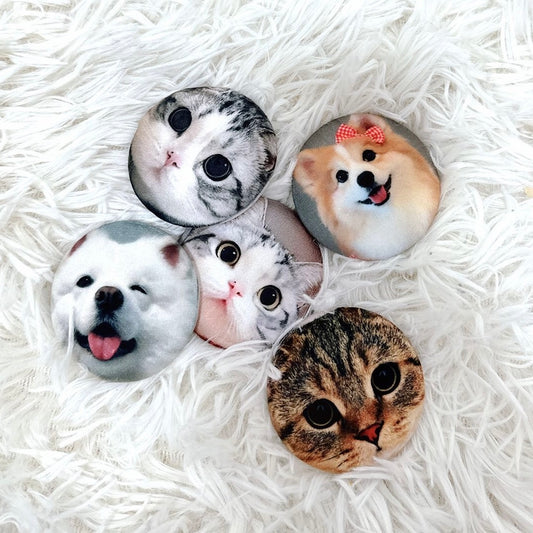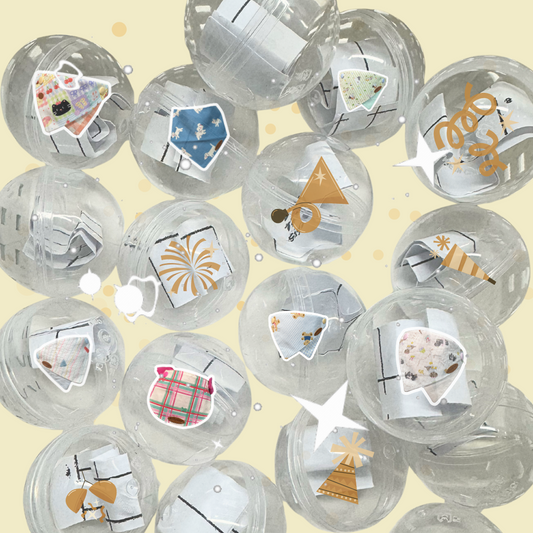Oh No! My Cat is Poisoned! 3 Steps to Save Your Furry Friend!😱
Did you know that cats have a surprisingly high chance of being accidentally poisoned at home? According to the ASPCA, about 1 in 10 cat cases are caused by poisoning! 😨
For example, just licking their paws after walking on uncleaned disinfectant or insecticide can be enough to poison them... So, what should you do if your cat accidentally ingests poison?
1. Witnessing Your Cat Ingesting Poison:
This is the best-case scenario! You can immediately stop your cat and flush their mouth and oral cavity with plenty of clean water. Then, seek help from a veterinarian, explain the situation, and see if further treatment is needed at the hospital.
In this case, your cat is unlikely to be in any danger. However, many times, owners only discover their cat is poisoned after they start showing symptoms.
2. Symptoms of Cat Poisoning:
The symptoms of poisoning vary depending on the type and amount of toxin ingested, and they may appear immediately or within a few days:
Ingestion of Poisonous Substances:
Besides directly ingesting poison, a more common scenario is for cats to indirectly ingest it while grooming or licking their fur. This can cause symptoms such as: unsteady gait, becoming unusually agitated or excited, rapid breathing; drooling, vomiting, or diarrhea; tremors, increased heart rate; possible loss of consciousness or shock within a few hours. While most cases of cat poisoning are due to ingestion, inhalation or skin contact can also lead to poisoning.😱
Inhalation of Poisonous Substances:
Inhaling toxic gases, powders, etc., can cause coughing, drooling, difficulty breathing, unconsciousness, or coma.
Contact with Poisonous Substances:
Skin contact with chemicals or poisonous plants can cause irritation, leading to frequent rubbing, rolling, licking, and swelling. In severe cases, the skin may become red, develop ulcers, or bleed.
It's important to note that these symptoms are not exclusive to poisoning; some diseases can also cause similar symptoms. Identifying the source of the poisoning is the best way to proceed.
3. Identifying the Poisonous Substance:
If your cat shows symptoms of poisoning, take about 3 minutes to check the table below to identify the source of the toxin. It's best to pack the poisonous substance and bring it to the hospital for testing.
Common List of Poisonous Substances:
Household and Chemical Products: Various insecticides, cockroach baits, rat poison, snail bait (metaldehyde). Mosquito coils, mosquito repellent (pyrethroids), insect repellent (DEET). Various cleaning agents and disinfectants. Such as Dettol clothing disinfectant, undiluted bleach, etc. Antifreeze, lead-based paint, fertilizers containing nitrogen, phosphorus, and potassium. In beauty products, mousse, nail polish, and skincare products containing essential oils are also dangerous for cats.
Plants: Various lilies, seeds of Prunus plants (such as apples, plums), various Araceae plants (philodendrons, etc.). As well as tulips, asparagus ferns, peonies, aloe vera, ivy, etc.
Food and Medication: Chocolate, onions, chives, scallions and garlic, xylitol, raisins, coffee, etc. Medications include various human medications; according to vets-now, the most common medications ingested by cats are human cold medications and antidepressants.
If the poisoning is not caused by any of the above substances, it is recommended to take your cat to the hospital for examination and treatment as soon as possible. To prevent secondary harm, it is advisable to seek medical attention promptly.
4. Dealing with a Poisoned Cat:
If the symptoms are caused by the above substances, it is recommended to take your cat to the hospital for examination and treatment as soon as possible. To prevent secondary harm, it is advisable to seek medical attention promptly.
When your cat shows symptoms but is still conscious: First, stop your cat from licking itself constantly. You can try giving your cat some water.
Use a clean paper towel to wipe away any vomit residue from your cat's mouth. ( Remember to take a picture of the vomit for the vet's reference ) Please do not induce vomiting in your cat without a doctor's permission, as incorrect procedures may cause secondary harm to your cat.
If your cat is already unconscious: Move your cat to a well-ventilated area and let it get some fresh air. Then rush to the hospital for examination and treatment.
5. Treatment and Recovery:
Once you bring your cat to the hospital, the veterinarian will determine the source of the poisoning based on blood and urine test results and your feedback. Possible medications include: anti-epileptic drugs, emetics, activated charcoal, etc., as directed by the doctor. The recovery of a cat after poisoning largely depends on the time of medical attention. If treated promptly, they usually recover within a few days.
Cat poisoning is quite common, but as long as the owner stays calm and seeks medical attention promptly, most cats will not be in life-threatening danger.
Therefore, please pay attention to the safety of your home environment and avoid your cat from ingesting poisonous substances!
Finally, I wish all the little kitties good health and happiness! 🐱💖











































